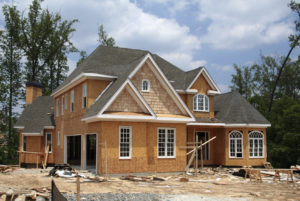Builders’ policies are not totally comprehensive. While specific policies vary, the vast majority of construction coverage policies are written based on a regulator-approved standard form. So for the most part, you can expect your policy to cover the buildings and structures on the property, including the systems directly installed thereto. Usually, your standard policy will cover such items as heaters, electrical systems, HVAC systems and boilers. Policies will also usually provide coverage for temporary structures, as well as construction materials that are stored on the premises for use on site. But sometimes property owners and contractors alike are taken by surprise when a policy doesn’t cover something:
Unless you buy specific extensions or rider most policies will not cover items that are external to the structures, such as fencing, walkways, roads, swimming pools, and other external items not intrinsic to the main enclosed structures.
Landscaping is also not covered under this particular policy, though it may be covered under a flood or fire insurance or wind insurance policy, depending on the hazard that caused the damage and the type of structure.
Items that are normally underground are also not usually covered. Examples include plumbing and irrigation systems, drains and even building foundations.
Water Structures
Is the property adjacent to a body of water? Your standard builders insurance policy probably won’t cover items that interact with the water. For example, it generally won’t cover bridges, docks or wharfs.
All-Risk vs. Specific Peril
All-risk policies provide protection against any risk, while named peril policies only protect against damages from specific hazards. All things being equal, you can expect a higher premium from an all-risk policy versus a named-peril, or specific peril policy. On the other hand, if you have coverage against one type of occurrence already, it may not make sense to pay full price for an all-risk policy, doubling up your coverage. But be careful with this type of planning
Riders and Endorsements
Unlike personal lines of insurance, which are more tightly controlled by regulators to protect unsophisticated consumers, commercial lines of insurance, including builders’ insurance, features policies that are readily and easily upgraded to include additional coverages that may make sense for the builder. It is more efficient for an insurance company to cover an unusual risk with a rider than to build the coverage into policies for which it isn’t even relevant. It makes no sense for everyone who isn’t building a home with a swimming pool pay into swimming pool coverage for those few who are.
If you need coverage for a specific item not included in the base policy, your insurance company can probably write up a rider or an endorsement to cover the extra risk. You’ll have to pay an additional premium, and the maximum dollar amount for that particular risk will be clearly defined.
For example: Acts of war and acts of terror are frequently listed as exclusions on standard insurance policies. But if you are building a structure near a nuclear plant, for example, or a high-profile and logical target for terrorist groups or an enemy military, you may want to consider purchasing additional coverage.
When you buy this coverage, the insurance company grants an “extended policy.”
Read Your Policy
It is important to read and understand your policy in detail, paying particular attention to the policy exclusions. If one of the exclusions is a risk you’re concerned about – or if you would suffer a significant loss in the event of damage to or destruction of a specific structure or item on the property that’s excluded, bring it up right away with your agent, and have him or her draw up a rider, which will be attached to the back of the policy. The additional premium required is usually small, but it covers a big loss in the event something goes wrong.


0 Response to "Builders Risk Insurance"
Posting Komentar